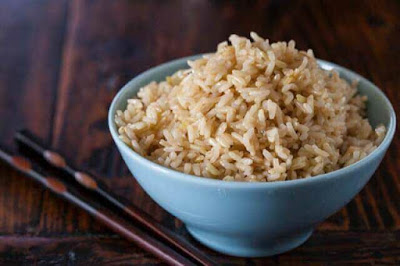At least a dozen sorts of rice provide different textures, tastes and nutritional value. Brown and wild rice contain the entire grain, meaning that both the germ and therefore the bran of the grain are preserved. Consequently, brown and wild rice are considered healthier because they contain more nutrients and fiber. In contrast, white sorts of rice have the germ and bran of the grain polished away, which diminishes their nutritional profile and increases their glycemic load, or impact on blood glucose levels. ask a nutritionist about the advantages and potential drawbacks of adding more rice to your diet.
WHITE RICE
White rice comes in short-grain and long-grain varieties. Short-grain rice is extremely starchy and becomes soft and sticky once you cook it, which makes it ideal for sushi. Short-grain rice is additionally utilized in paella and risotto dishes, and sometimes mixed into chili and stews. Long-grain rice, like jasmine and basmati, contains less starch, therefore the cooked grains are drier and don’t clump together. polished rice is about 90 percent carbohydrate, 8 percent protein and a couple of percent fat, consistent with the book “Contemporary Nutrition: Functional Approach.” polished rice may be a good source of magnesium, phosphorus, manganese, selenium, iron, vitamin Bc , thiamine and niacin. it's low in fiber and its fat content is primarily omega-6 fatty acids, which are considered pro-inflammatory.
BROWN RICE
Brown rice also comes in both short-grain and long grain varieties. rice is chewier and heartier than polished rice , and takes almost twice as long to cook because it contains less starch. rice may be a whole grain and contains the maximum amount as fourfold the fiber of polished rice . Fiber slows down the speed at which carbohydrates convert into glucose within the bloodstream, helping to stabilize blood glucose levels. As such, rice features a lower glycemic load compared to polished rice . rice is about 85 percent carbohydrate, 8 percent protein and seven percent fat. it's more minerals, especially magnesium, than polished rice .
WILD RICE
Wild rice is technically considered a grass, although it's sold as rice. it's even more nutritious than rice in some ways , because it contains more protein and better levels of vitamin A and vitamin Bc , consistent with the book “Superfoods: The Healthiest Foods on the Planet”. Wild rice contains less starch, which provides it a lower glycemic load, and has more omega-3 fatty acids, which deter inflammatory reactions. However, wild rice varieties often have less mineral content compared to rice .
RECOMMENDATIONS
Although wild rice and rice have lower glycemic loads than polished rice , no sort of rice can really be considered a coffee glycemic food. Consequently, diabetics shouldn't adopt diets heavy on rice, especially short-grain, white varieties. Brown basmati rice has rock bottom glycemic load and contains many minerals and vitamins, so it's often considered a healthy choice. If you've got arthritis, wild rice is that the only variety that doesn’t promote inflammation.
DOES RICE cause you to FAT?
There isn’t one simple answer as to if rice causes you to fat. Rice can contribute to weight gain, but it all depends on what proportion you eat throughout the day. The potential impact of rice on your weight also varies consistent with the sort of rice and its fiber content.
Calories and Weight
There’s no secret about how you lose or gain weight. once you eat more calories than you employ through daily activities, you gain weight. counting on activity level, women should get 1,800 to 2,400 calories daily and men should aim for two ,200 to 3,000, consistent with the USDA’s Dietary Guidelines. Don’t reduce your calories significantly less than the quantity that matches your lifestyle, because your body needs the fuel to work at optimal capacity. to work out whether rice might cause you to fat, its calories must be balanced within your total daily caloric intake.
Calories in Rice
The calories you’ll get from rice vary slightly between white and rice . One cup of cooked polished rice has 205 calories, compared to 216 in rice . Rice illustrates the worth of portion control because it’s easy to place quite 1 cup of rice on a plate, whether because the base for a stir-fry dish or as a entremots . From the attitude of calories alone, rice won’t cause you to fat as long because the total calories you gain from rice don’t put you over your daily calorie goals.
Fiber and Weight
The type of carbohydrate in your diet makes a difference when it involves weight control. Research suggests that folks who eat more fiber are less likely to realize weight. Refined grains, like polished rice , cause blood glucose and insulin to rapidly rise, which causes you to feel hungry. within the future , spikes in blood glucose may cause you to gain weight, consistent with the Harvard School of Public Health. Eating more fiber also lowers the danger of developing diabetes and disorder .
Fiber in Rice rice may be a whole-grain that also has all its natural fibre . When rice grains are processed to supply polished rice , the bran and germ are removed, which suggests it’s not an entire grain. The bran and germ contain most of the fiber and lots of other nutrients. polished rice are often enriched with minerals and vitamins, but the fiber can’t be added back. Both types have about 45 grams of total carbohydrates in 1 cup of cooked rice, but rice has 3.5 grams of fiber, which is sixfold quite the 0.6 grams in polished rice .




Post a Comment